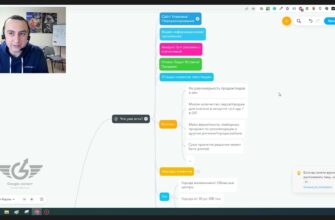- The first option for fake orders is large amounts
- Frequent fake orders for small amounts with low store turnover
- Situations when you order cash on delivery or return one of the ordered items
- Nuances of how to adjust conversions
- How to make the fourth analytics to avoid fake orders?
- Two ways to combat fake orders
- Fight against fake orders if the purchase tag is set
- What should you do to adjust conversions?
- When does it make sense to adjust conversions?
- Conclusions
Hello everyone. My name is Yana Lyashenko and I am a Google logistics specialist. And in today’s video we’ll talk about how to deal with fake orders in Google Ads. This time. The second is how you can reduce or adjust income if your business has a lot of product returns. Let’s look at the context of the situation in order to make it clearer in what situations this should be applied or not.
The first option for fake orders is large amounts
Let’s consider the situation with fake orders. You have two contexts for these events. The first is when competitors or some beads for which they like to make very large, large fake orders through Google advertising, there are 10 million, 20 million, 3 million. It doesn’t matter. They really stand out. This is a fake order. There is no client in this directly.
I don’t know why competitors do this, because they think that they will radically negatively affect your advertising there. But you need to remember one thing. If you, the more conversions you have in general in your advertising account, for example, conversions there reach about 100, under 200 per day, then the less likely it is that this will somehow affect optimization at all. Yes, this campaign may somehow deteriorate in the context of work and become more expensive. But all the same, over time it either stabilizes or you simply transform the advertising campaign and it continues to work in almost the same mode. Well, does this really pass without a trace? No. But to say that this is something that fundamentally breaks something irrevocably and forever, that you need to move to a new advertising account. No.
How many calls and sales will I get by ordering contextual advertising from you?
I need to calculate the conversion of my website Describe
the task
in the application
Calculate potential ad revenue Google
contextual advertising calculator
Frequent fake orders for small amounts with low store turnover
The second situation is when you already have few orders, and cunning competitors place these fake orders not for such large amounts, but for smaller ones and very often. Then this is a problem in your case. Why? Because the client’s avatar and price tag are very similar to the real one, but it is fake. And the user’s behavior is quite similar to what your real client may, in principle, have. This, in principle, is more harmful than any large order for three or four or five million. It is not as critical as, for example, such small orders.
Situations when you order cash on delivery or return one of the ordered items
That is, in such situations it is better to adjust these conversions. Another situation is when you simply have a lot, for example, they often order cash on delivery. And or, for example, you have a situation where people order several return product items – they take one away, one is returned, for example. It could be there with shoe sizes or colors of some things or something like that. Then it makes sense to adjust these conversions so that, in principle, you can meet more or less adequate analytics in the advertising account itself and see real profitability.
Nuances of how to adjust conversions
Plus, these are really the nuances that can influence the further optimization of the same performances if you work for them. And even for a regular product, if you are working on a target ROI. This is such a very important nuance, a factor that needs to be taken into account in this case. So we figured this out a little in what context this can be done.
The second caveat is that these adjustments can only be made for Google Ads conversion. That is, your advertising account may have several, several sources of these conversions. This could be, for example, the fourth analytics. Or maybe Google Ads conversion. And in this context, we can only adjust the conversion created in Google Ads. They are created slightly differently. You import the conversion for the fourth analytics from analytics. The same conversion, it is directly created in this way.
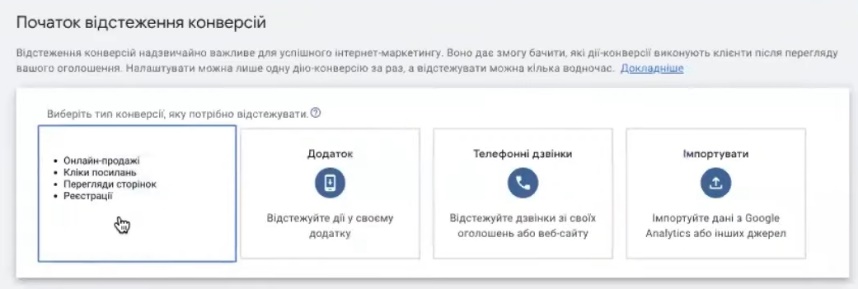
This is usually what you often hear from me: conversion tag purchases, not those purchases, but tags, purchase tags. Purchase, could it be for a call or something else. Therefore, for promotion owners, this is not a very positive situation, because you have no options.
You cannot put a Tag manager on the site to track this purchase tag. And for other sites, including Hoshopop, this is quite easy to do and you won’t have any problems with the nuances. That is, recorded
How to make the fourth analytics to avoid fake orders?
The fourth analytics, in order to avoid fake orders, you can do this in one single way. When in the fourth analytics you will record a non-classic purchase by setting, which Google usually recommends for tracking. And when you download offline conversions. Offline conversion is when, for example, you enter your account in the CRM system.
You have all these transactions there and each transaction has its own status. And so, if, for example, it was sold there, target, not target, sold with some certain income, adjusted, that is, with real value. And if, in principle, the cycle of making this purchase somewhere is not very long, no more than 72 hours, then you can, in principle, send it from the CRM system, thanks to additional integrations or any intermediate conversion systems, directly to analytics.
That is, in the fourth analytics you do not record Purchase as the classic option. That is, when you put the code on the final page and immediately as the person did it there, or by cash on delivery, not by cash on delivery, through the payment system and this other order. And already in your own CRM system, assessing the quality of this order, whether it’s fake or not fake. Was it, was it not real, was it not real. For what amount, if the person there changed his mind or something like that.
You simply send the real amount of income from the CRM system. Not to be confused with there returns or that type. This is a completely different format for conversion tracking. This is your only uninterrupted option for optimizing advertising campaigns based on a more or less real number of orders.
Of course, the more orders you have per day, the more you need to focus on making sure you have the right conversion analytics. Because if you, for example, have a lot of returns or a lot of refusals, for the fourth analytics the only thing you can do is send a refund. Such an event is called a refund.
But, unfortunately, it does not take any part in optimizing Google Ads conversions. That is, to generate some beautiful reports in the fourth analytics, well, basically okay. But you can already generate a report either in the admin panel or in the CRM system. Just so that there are beautiful reports in analytics, this is the situation.
Therefore, this is your only option. Previously, for the third analytics there was a format for sending a negative transaction. There is no such history for the fourth analytics yet. Without testing such options, you can try to do something with a negative transaction. But this needs to be tested. For example, for Prom this is not flexible at all, that is, you still need some kind of CRM system with which you would send an event about purchases. Well, that is, if it’s global.
Two ways to combat fake orders
That is, if it hits you, you can fight fake orders in two ways. First, you can send from the CRM system, using third-party or internal integrations, a purchase, information about the purchase, stuffing there, IDs of these products there, product names.
In short, all information about the purchase, all about the purchase in general, either in Google Ads via the Google Ads Content API or in the fourth analytics, depending on what, what integrations are available to you. If you have a self-written platform, then you can directly load Google Ads using the Content API, depending on which platform.
Or the second option. You, if you are not usually on Prom, you can record the same purchase tag with a classic code, but then adjust it or cancel these transactions completely or adjust their value, for example, if you only need to adjust the value.
This is how your entire advertising account will truly be optimized for the right conversions. That is, in hindsight there is very little that can be done to undo, not to take into account previous conversions. That is, you need a certain correct lever, or, conditionally, run the code in Google Ads, so that it takes it into account and takes it, zeroing out this conversion and not taking optimization into account.
All the others are some kind of options, someone there, there comes up with something so specific, there is an adjustment there, for devices or IP people, the same. For example, very often, for example, the IPs of these competitors are caught on the site. And they are minus in advertising.
These are all just targeted techniques that can only have a very slight impact on your, that is, your future. They can influence something else, but for past periods they are generally very ineffective. These are two such points that you need to consider.
Fight against fake orders if the purchase tag is set
If you use the purchase tag… I remind you that for most platforms such as WordPress with WooCommerce, Opencart, Khoroshopa, Shopify and the same, you can use Wix. Who else is there? It’s practically possible to integrate across different platforms, put this purchase tag and then work with it. Not with the fourth analytics, but with a buy mark.
In general, I recommend that most, if your platform allows it, switch to the purchase tag and don’t fool around. Because the fourth analytics is the story that over time only worsens the tracking indicators, the user behavior pattern. It incorrectly gives the performance an understanding of the number of the same returned users, but that’s not the point.
Today we are talking about the fight against adjusting actual conversions. If you don’t have the opportunity to implement something through CRM, you track it in the admin panel. Doesn’t matter. Adjust the purchase tag if you have fake orders. What adjustment format do we have?
We have two formats for these adjustments. I will give you a link below the video link to this help so that you know. We have two adjustments. It is called the first RESTATE and the second RETRACT. We will call them that in your file.
If you can still look at the general certificate this way. What do we have here? Here we can discard conversions that should no longer be counted. Reduce, list the value, change the value based on the client’s indicator for the entire period. These two elements also affect ROI. Secondly, feedback on the strategy accordingly. Target price. Target cost per conversion, maximum conversion. Because we completely reset this conversion. That is, it’s clear.

What should you do to adjust conversions?
What do you need to do for this? You enter your conversion block. Go to the download block.
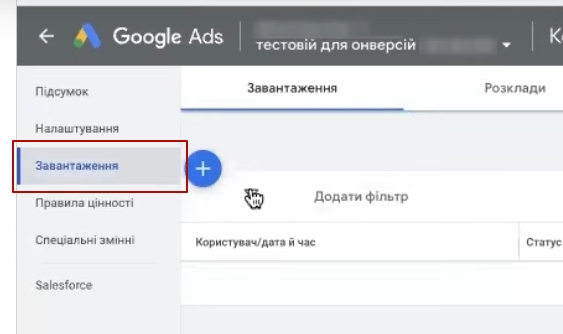
How many calls and sales will I get by ordering contextual advertising from you?
I need to calculate the conversion of my website Describe
the task
in the application
Calculate potential ad revenue Google
contextual advertising calculator
Remember that you must have conversions in your ad account in order to cancel. Press the plus sign. And here you look at the templates. Because you need to download the template, respectively, the file that you will upload directly here. What’s nice is that you can upload it via Google Plates.
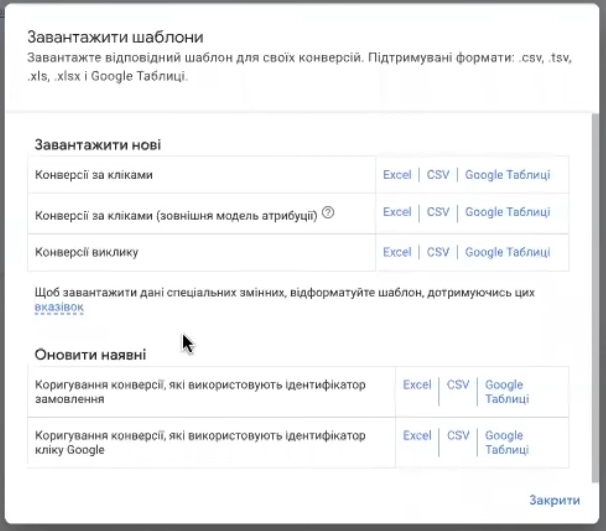
That is, in fact, in Google signs, as you configure there, you can automatically add this information over time and it will be loaded directly into Google Ads. This seems very convenient to me.
What do we need to do? We need to adjust conversions based on order ID. This is because if you are tracking a purchase tag you are passing in a parameter such as transaction ID. This is the order ID. It is quite convenient to do this. Because if you use Google click identifiers, then you first needed to track them somewhere, collect these identifiers. That is, you won’t find them here that easily. This needs to be done on the site in addition to stories tracking these Google id clicks.
These are these id-clicks, these are these UTM tags that Google puts up, written in abracadabra. It is important that they are written in the correct register, nothing is changed, because it, in fact, will not be able to match the data and will generate an error.
That is, in our case, when we already have conversions, we want to reset them to zero, then this is the most proven option for us. Why? Because all we need is the order number, this is the name of the conversion. The name of the conversion is what it is called here. That is, this is what you call the conversion here, so you copy it completely.

It is advisable to copy the name rather than write it in manually, just in case if, for example, you are not sure that you wrote everything in Cyrillic or Latin, for example. I didn’t copy it.
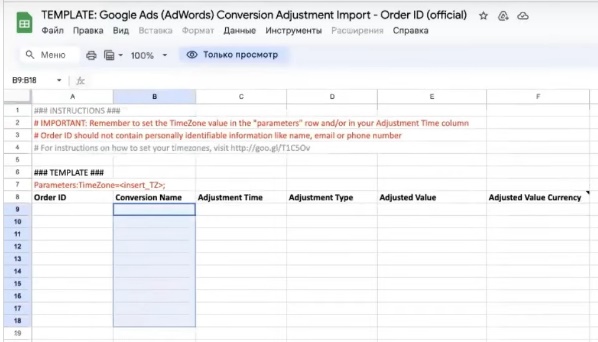
Oh, this needs to be copied here. This file. “Create a copy.” Copy. This is the template they give us, the template. “Conversion name”. We still need to put in time. Time must be entered in a specific format. And here Google immediately gives us instructions to see in what format we need to enter the time. The more correct you choose, in principle, the time format and timezone, the better it will be for you. Because if you select the time incorrectly enough, then the adjustment will not be entirely correct.
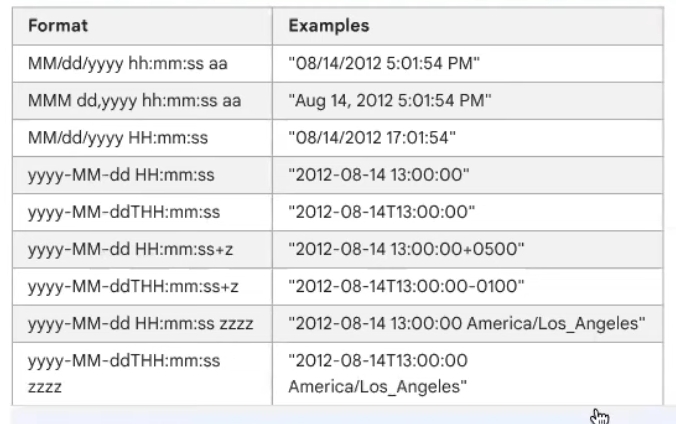
That is, in accordance with the format that you have according to the data… Yes, you see, we would like to select the hour and minute here. If, perhaps, you have several time zones taken into account, it is also advisable to take this. For example, if you launch in one account, for example, Australia, the States, the UK, then it is advisable to also indicate the Time zone there, respectively. You can specify it in this format. If for Ukraine, then conditionally this will be enough. Your task is to indicate the time of this conversion.
The next thing you need to specify is the Adjustment Type. As I said, there are only two types of these Adjustment Types. This is either RESTATE (value adjustment) or RETRACT (cancellation). RETRACT – complete cancellation. That is, if we want to cancel this conversion, then we need to enter RETRACT here. Here you need to enter value. Here you can write a complete zero or leave it blank.
Well, you register the currency in accordance with the international identification of these currency codes. For example, for Ukraine, it will be ua. That’s right UAH. If it is, for example, we have a dollar there. This is USD. Wait, link, oh link, it’s USD. If the euro is EUR correctly. That is, here we can Google these encodings. For what? For them, it is desirable that this currency matches the currency that you have in your account.
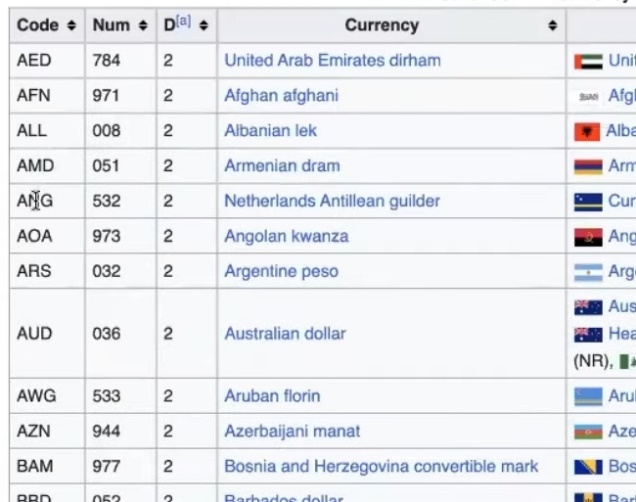
Since there are situations when, for example, from one account, in one payment currency there are several accounts. But for example, another currency is being tracked, for example, on some market. Well, for example, the Czech crown is the payment currency in one of the accounts. And, for example, for others it may be the euro and so on. So that you take this nuance into account. Because sometimes they forget, they put in one currency and then it doesn’t cancel it correctly enough. That is, this value parameter is also important for you.
That is, you download it, set the time, value and currency accordingly. And download this entire story directly to Google Ads. It doesn’t load for me because I have a test account. There is no conversion at all here. Download, see status. You can also, as I said before, you can conditionally load this information automatically. If you load it into Google tablets, for example, update information or with some scripts, or upload it through the API (!!!!!), it doesn’t matter.
If this is a fairly regular situation for you or you manually register it, just remember to pay attention to this block that this Google sign requires open access for this user. Well, that is, conditionally, here in the access settings you simply write out this e-mail here, editor, and send it so that Google still has the right to make changes to the Google sign. Select Google sign. You tie it up. Before doing this, be sure to turn on preview to check if you have any errors.
When does it make sense to adjust conversions?
In this way, in principle, you can load yourself without the problems of adjusting or canceling certain conversions. That is, it makes sense to make adjustments when you need them, for example, in conditions where sales income is significantly less than it was originally.
For example, if you sent several pairs of shoes there, or I don’t know the colors of some handbags or some other product you have. When multiple sets are sent, it decreases. Or perhaps the person returned something, didn’t like something or something like that. Then it makes sense, for example, to adjust. But remember that it makes sense to do all these adjustments and so on only if you have a very regular history.
And secondly, your number of conversions, well, is very actively approaching at least 300, ideally to 500 per month. If it is at least partially approaching this number, then the more adjustments you make here, the more high-quality information you give, the more stable, in principle of Performance, you will have some other campaigns in the targeted profitability strategy.
The smaller this analytics, the, well, it is possible, the less somehow, in principle, all these problems of your effectiveness affect. Unless, if you have very large amounts of income there, or for example, you sell furniture there, conditionally, what is there on a high check. Then there is some meaning in this, the meaning of this whole story. Because there is a significant impact of some amount of the canceled transaction on the overall efficiency of the advertising campaign.
If you have a maximum of 30-50 per month there, then of course you can cancel something here, but this will not give any direct global changes there. Well, that is, and before that, Google did not really understand who to show your goods in order for you to increase. Now you are still adjusting.
Yes, something will affect the situation, but the question is the worst or in a greater way. Because after all, Google automation, it also works on statistical data. The larger the sample, the more presentable the average option, the weighted average, which it will select. The fewer statistics, the worse, in principle, the option will be.
Conclusions
Therefore, if you make it, in principle, if you use the purchase tag, and many have moved to this purchase tag when there were interruptions with the fourth analytics, there is an opportunity to adjust your conversions. Either completely cancel them, or, for example, adjust them with value.
Once here it is written “reduce (transfer) value”, conditionally. And here everything is very well arranged. You, there you simply indicate normally, if, for example, you need to list, you do not need to somehow reduce the value here. You just enter the real amount of income. He will simply replace it in an advertising account.
I will leave these links directly under this video so that you may be able to get acquainted in more detail with all these things if you are interested in there. Ideally, when you can organize this by Content API and you can load, for example, perfectly with CRM systems already real orders. Then it will directly work very well, for almost any advertising account. But there is a nuance.
Unloading conversions from the CRM system should be quite operational. Yes, in principle, you can also download a convention there, there is some kind of shape there, there, using the click identifier, much later. But it is better that it is no later than 72 hours. In analytics, this is completely, because there the attribution model will list very incorrectly.
For Google ADS, it is also better that it is more operational information. Therefore, perhaps, if you have a very stretched decision cycle, then load, for example, partial values. Or, for example, if the client went there and he went on the transaction cycle, you know that it is likely that he will go, then immediately send some value there in the near future.
or go on status. And for each status, for example, the status of a transaction to you to assign some certain value to the end. It is also possible to optimize advertising accounts. Yes, this is the most stable work of advertising performances for the product.
It is better when something goes into conversions immediately so that he can immediately compare all the information for himself. But as an option, it is also possible. Therefore, in order to fight a fake order, you have several options. First, send information from the CRM system using any integrators.
And the second is to directly try to switch to the conversion tag and manually rule it directly in the advertising account. So far, this is the whole set of more or less easy things that you can use for yourself in an advertising account in order to maintain your Performance in tone.






